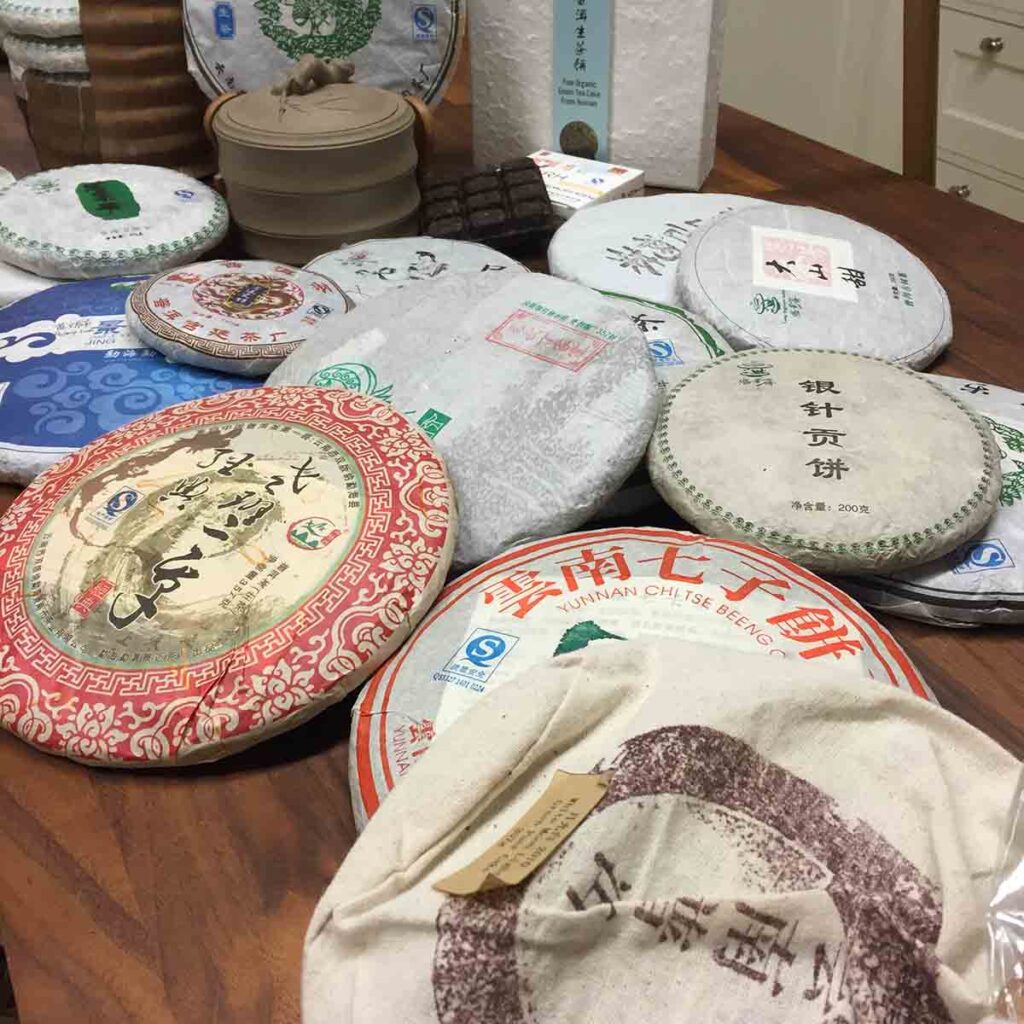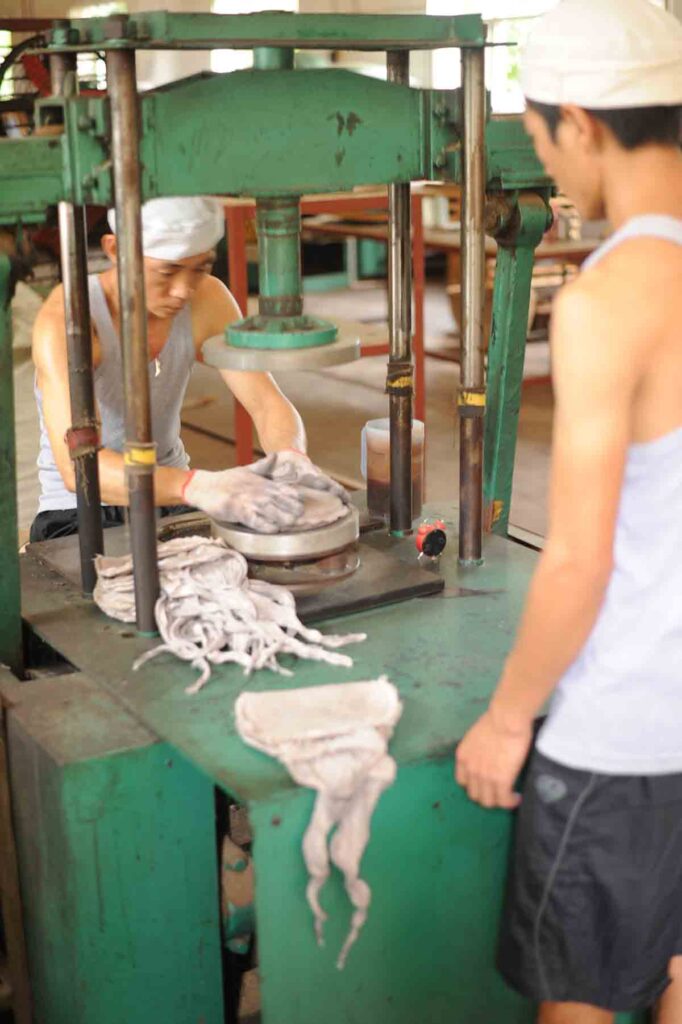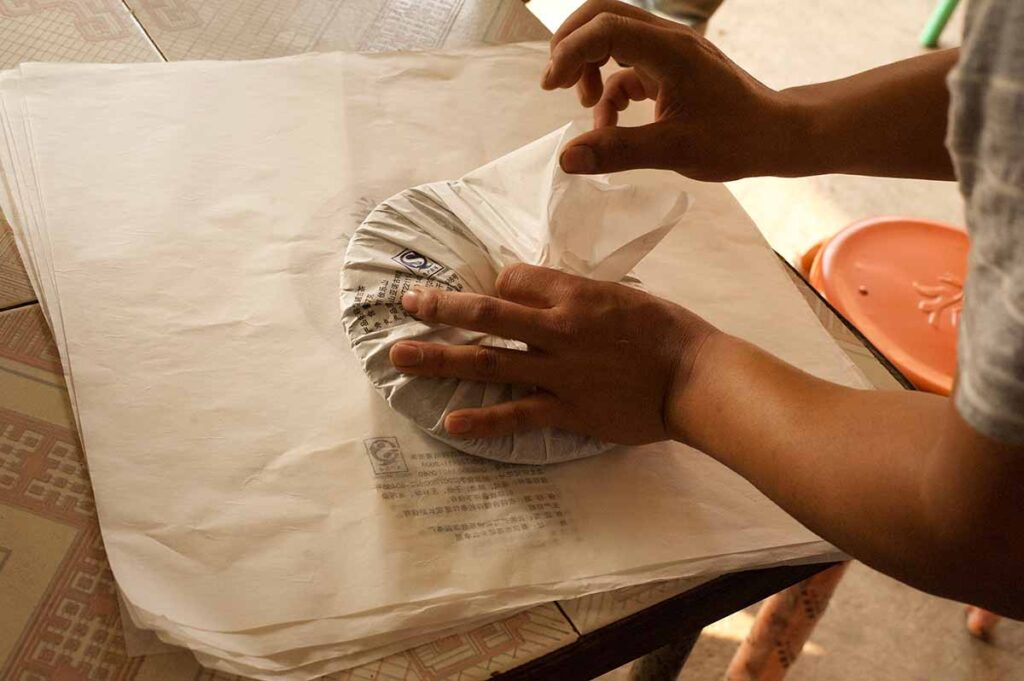What is puerh tea?
Puerh Tea
Heicha Fermented Tea
In China and Japan, there are fermented teas collectively referred to as Heicha. This term means “black tea,” but it should not be confused with the black tea we know in the West, as it is called “red tea” in China. The two names have already caused some confusion in Europe regarding processing methods. Experts have begun to refer to fermented tea as “dark” tea. To simplify, we refer to the category from Yunnan as Puerh tea, as we do not deal with other fermented teas from areas outside of Puerh.
This page is dedicated to providing interesting and relevant information about the unusual tea we call Puerh tea, pronounced pu-er. The tea has many spellings: Puer, Pu’er, Pu’erh, Pu Erh, and it can also be called Bolay.
Puerh tea originally comes from Yunnan’s natural rainforest. While white, yellow, green, Oolong, and many black teas are cultivated and harvested from the Camellia sinensis var. sinensis bush, Puerh tea is made from the leaves of the variant Camellia sinensis var. assamica or old Camellia taliensis trees, which are often referred to as wild.
Puerh tea comes from the southern Yunnan province in China. Originally, puerh tea came from the oldest trees that grow wild in the rainforest. Puerh is one of China’s most famous medicinal teas and has been enjoyed for over a thousand years. It is a fermented tea. Fermentation refers to the breakdown process of substances using bacteria, yeast, or other microorganisms, similar to composting. This technique of fermenting green leaves made from the special broad tea leaves has a unique chemical composition that makes them suitable for aging.
Artificially aged puerh is called shu and is fermented for at least two months under specially controlled conditions, where heat and humidity are monitored. Naturally aged puerh is called sheng and develops over time as it is stored. Well-aged sheng puerh is considered the finest and is sought after by connoisseurs around the world. These teas can fetch some of the highest prices in the world at auction.
Correctly produced shu puerh should be complex, mushroom-like, and have a scent of autumn leaves without tasting sour or musty. The flavor should be incredibly smooth and clean, like a good malt whisky, with a lingering sweetness and a hint of vanilla. The color should be sharp, clear dark brown to black, and not muddy.
Sheng puerh is like a very complex green tea, fresh and juicy with undertones of tobacco and astringency. Its flavor matures, becoming softer and more beautiful with age. Puerh has a very long shelf life, and depending on the quality of the leaves, it can be ready to drink 50 years or more after it is harvested. If the tea is processed correctly, puerh from high-quality leaves can significantly increase in value over time. In recent years, demand has led to higher prices for rarer puerh cakes. However, the high prices driven by speculation are decreasing.
Puerh Production
Until recently, puerh was a Chinese mystery, but the production process is quite simple. Puerh is produced by roasting the large Da Ye Zhong leaves, rolling them, and finally leaving them to dry in the sun. The result is raw tea, known as maocha, which can be made into either shu or sheng puerh.
In the past, the tea was pressed into cakes for easier transportation. The tea is pressed into many shapes, but the most well-known is the flat cake, called a bing.
357 grams of maocha is placed in a cloth bag, steamed, and shaped into a flat disc. A knot closes the bag, which is placed on a hollowed-out granite stone, and then a flat stone is placed on top like a sandwich. Then, one stands on the stone and gently rocks back and forth to distribute the weight evenly over the cake. The pressed cake is removed, allowed to dry, and wrapped in very fine cotton paper so that the tea can still absorb moisture from the air.
Seven cakes are stacked, wrapped in bamboo leaves, and tied together. The seven cakes weigh 2.5 kilograms and are called a tong. One horse can easily transport 80 kilograms, with 16 tongs on each side of the horse.
Puerh tea is attributed with many medicinal properties. The tea is believed to be suitable for people of all ages. It is often purchased to aid in weight loss and to combat the harmful effects of excessive alcohol consumption, but studies show that the tea can reduce cholesterol in the blood. Puerh is famous for its healing qualities, low caffeine content, and its calming effect and mild aftertaste.
The secret lies in the aging process—young puerh is fresh and sharp, but with age, it becomes mild, soft, and complex, like a good wine. Puerh stands out from other teas in that its flavor, aroma, and texture are unique in a way that nourishes both body and soul.
In recent years, the media has referred to puerh as a weight loss miracle, but there is much more to this tea than just a trend. Simply Tea offers the ultimate Puerh experience.




